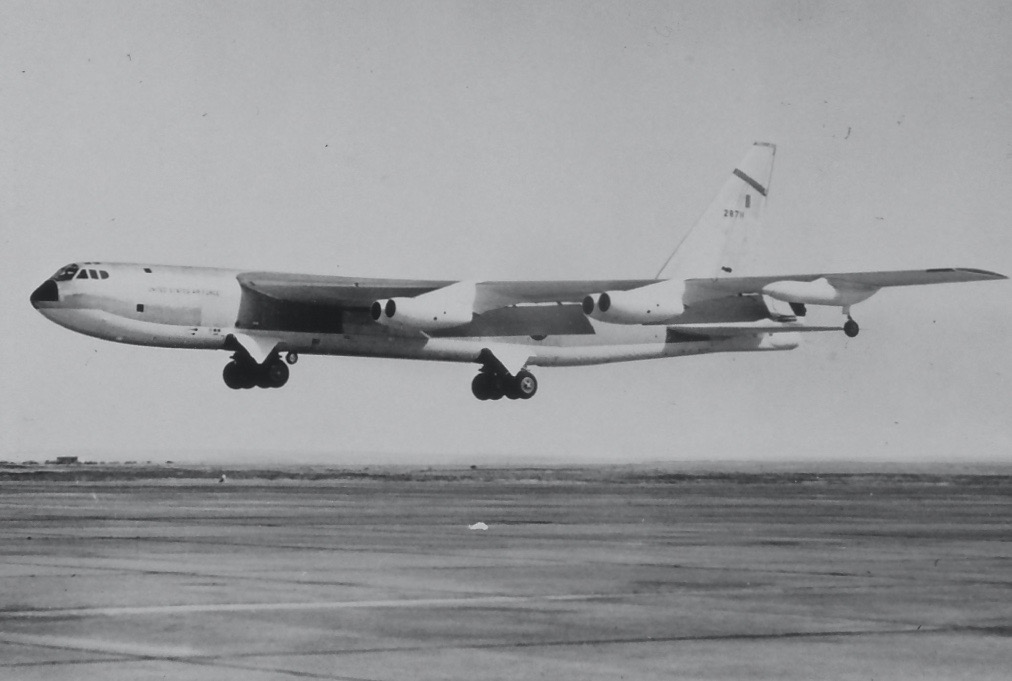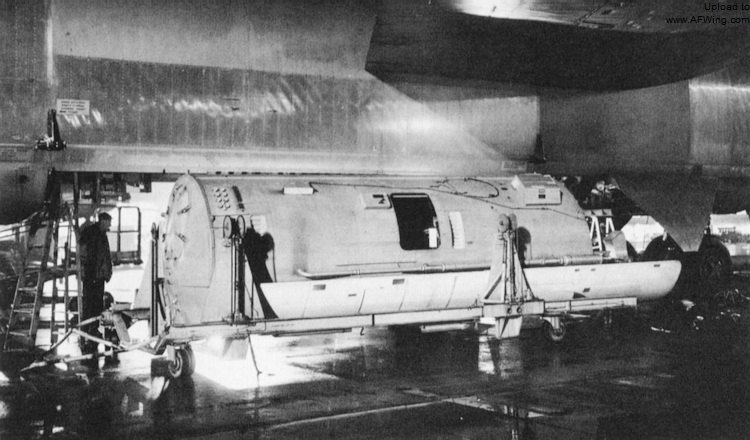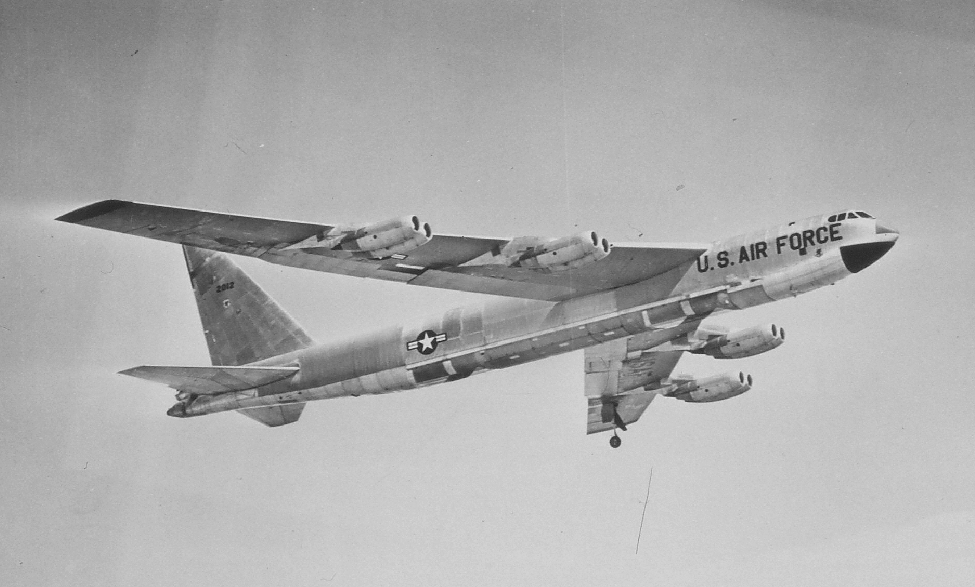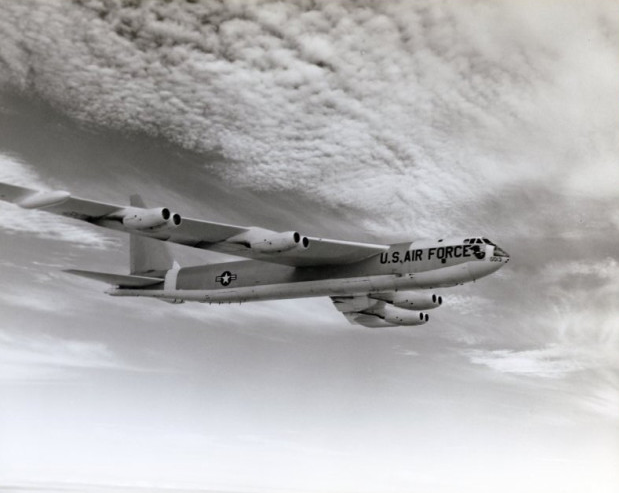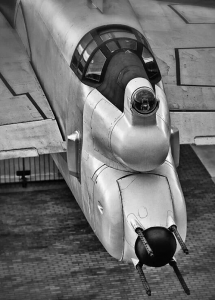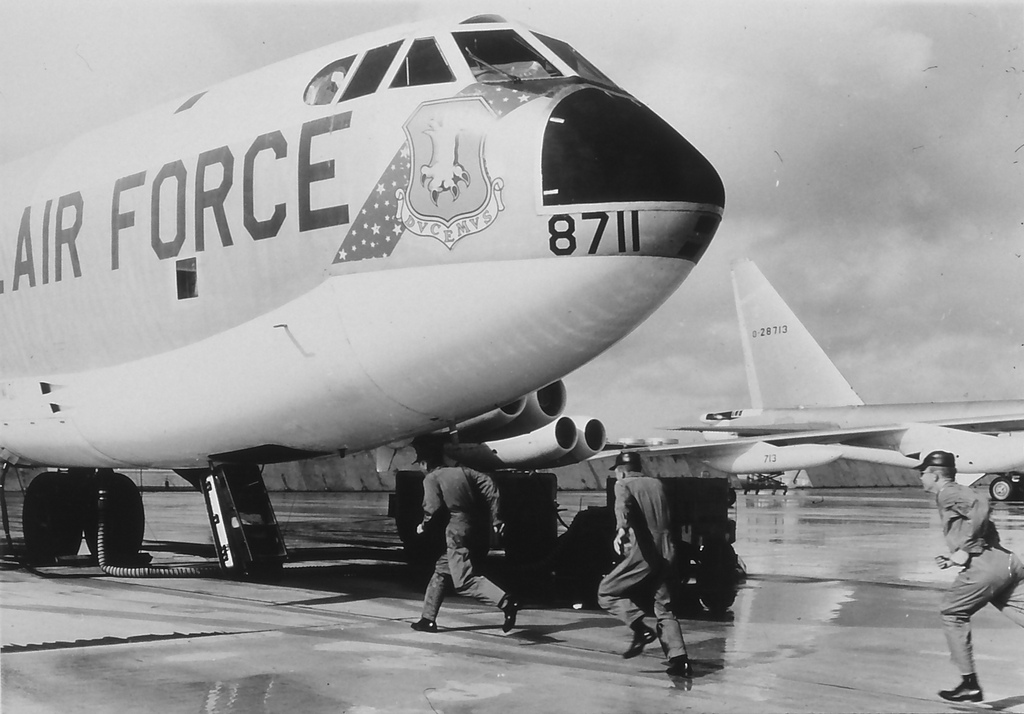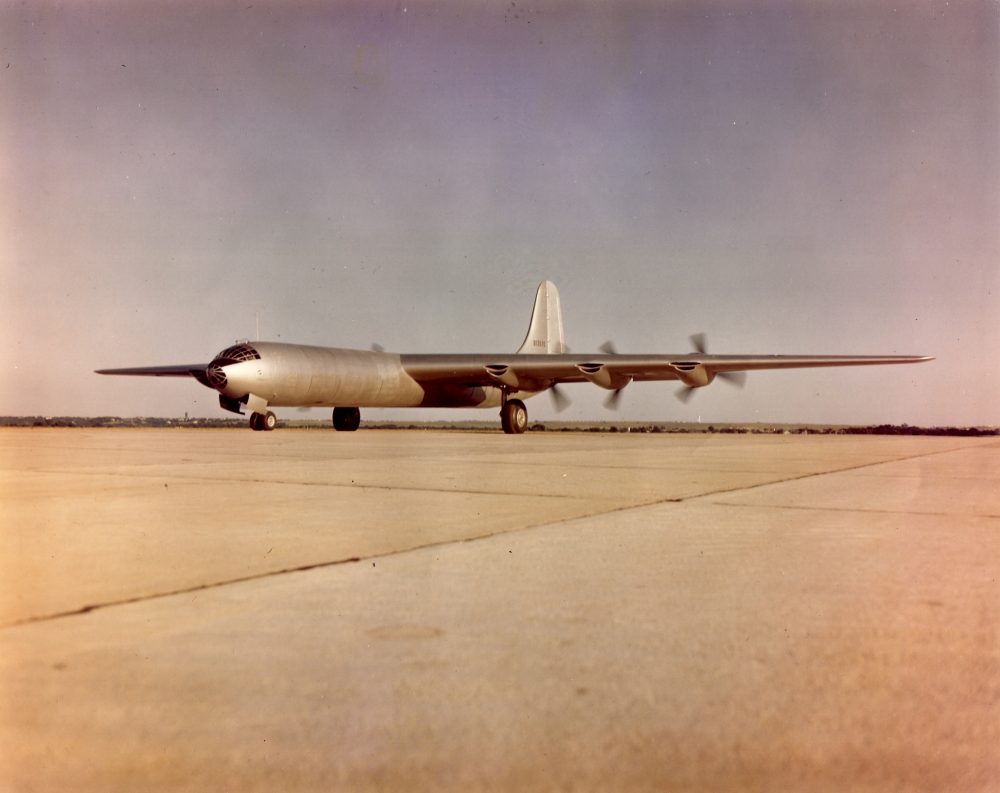
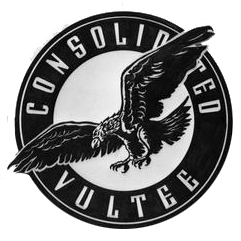 8 August 1946: At Fort Worth, Texas, the Consolidated-Vultee Aircraft Corporation XB-36 prototype, 42-13570, made its first flight. Convair test pilots Beryl Arthur Erickson and G.S. “Gus” Green, along with Chief Flight Test Engineer James D. “J.D.” McEachern, were in the cockpit. Six other crew members were aboard.
8 August 1946: At Fort Worth, Texas, the Consolidated-Vultee Aircraft Corporation XB-36 prototype, 42-13570, made its first flight. Convair test pilots Beryl Arthur Erickson and G.S. “Gus” Green, along with Chief Flight Test Engineer James D. “J.D.” McEachern, were in the cockpit. Six other crew members were aboard.
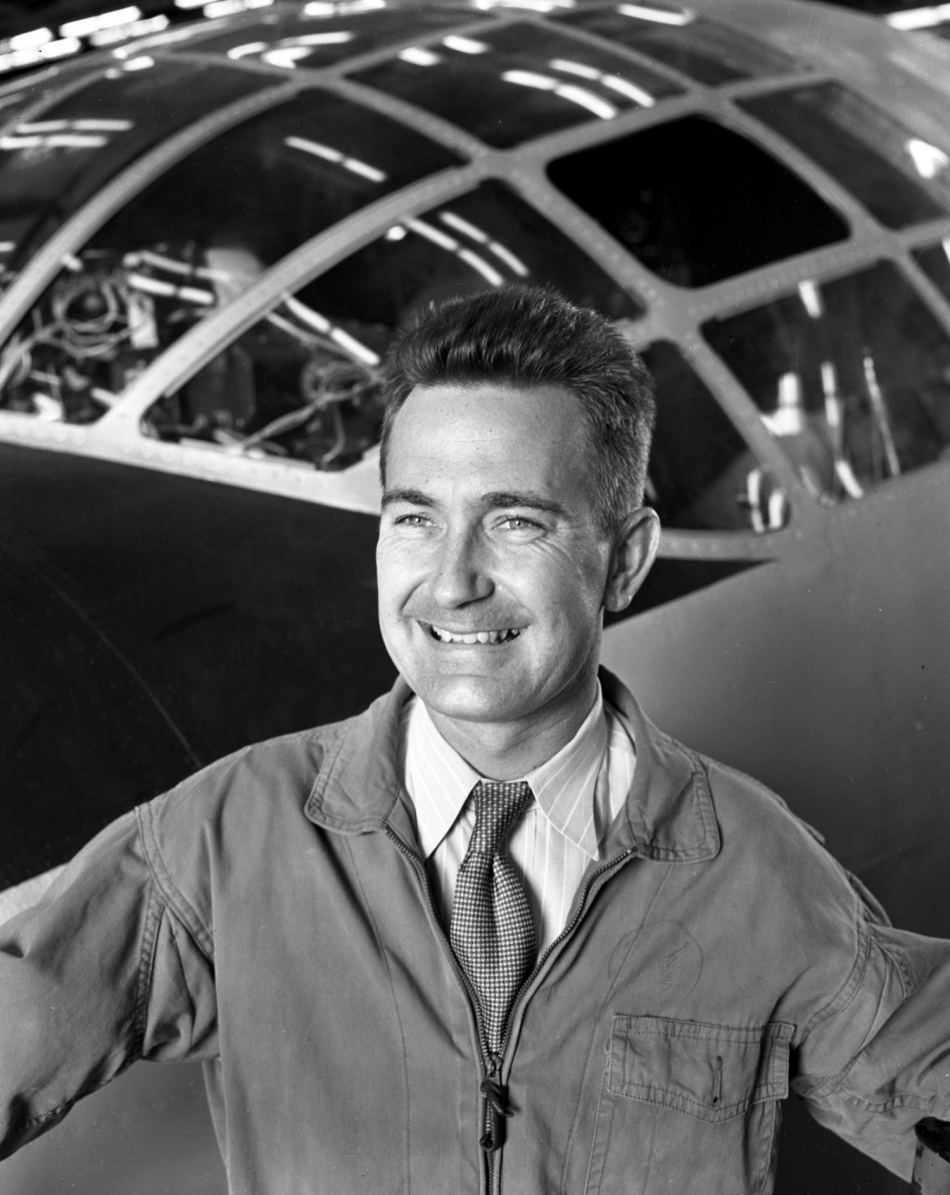
In a 1992 interview published in Code One Magazine, Erickson said that he and his crew had been ready to take off at 5 a.m., but they didn’t get their release until noon. The Texas summer temperature was 100 degrees (37.8 °C.), but inside the cockpit, the temperature was 140° F. (60 °C.) The engines were overheating and the oil pressure was low. When they pushed the throttles forward, the XB-36 accelerated smoothly and lifted off at 110 knots (126.6 miles per hour, 203.7 kilometers per hour). The retired test pilot said, “The XB-36 controlled nicely in the takeoff run and in the transition to steady climb. We flew conservatively with the gear down. The flight was uneventful and lasted thirty-eight minutes.”
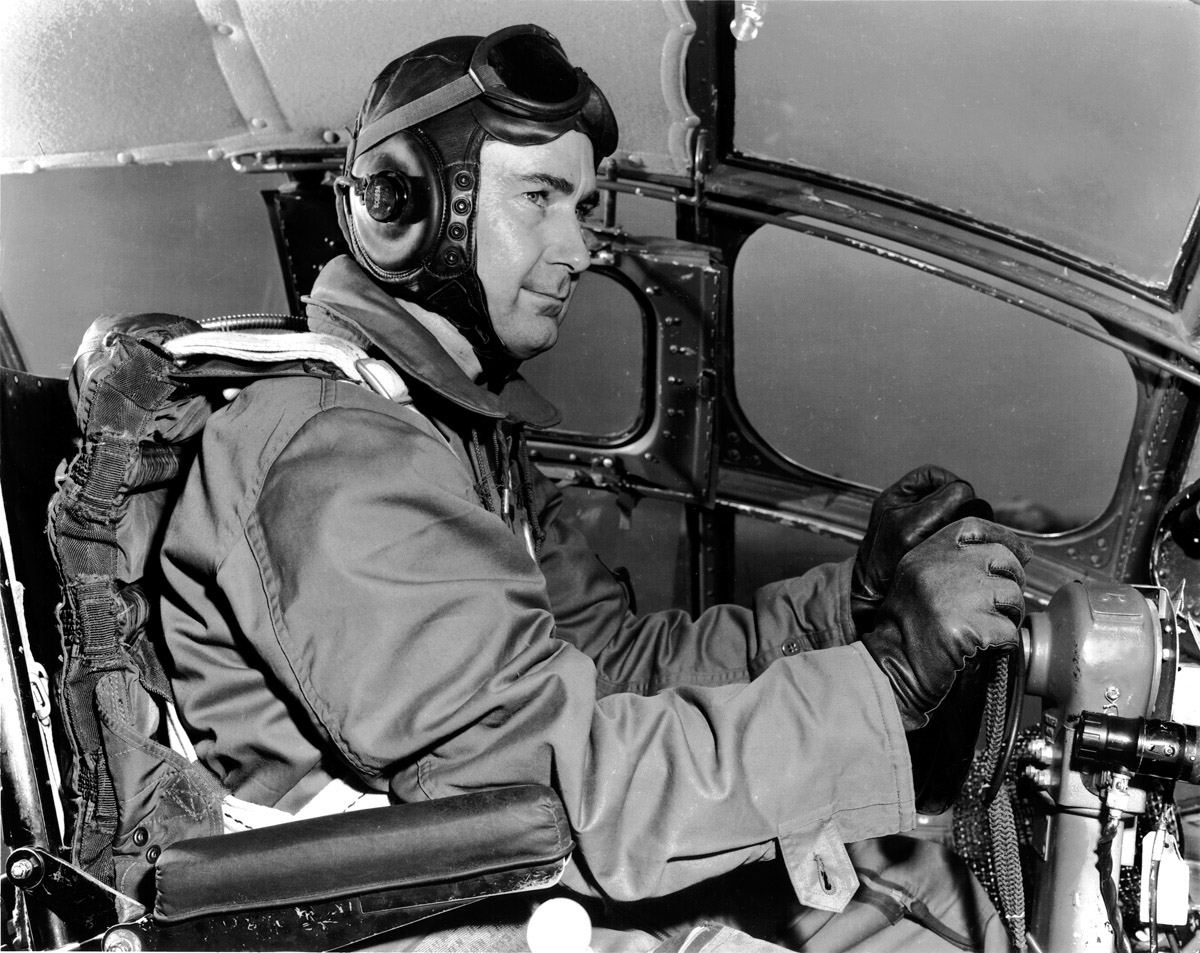
The B-36 was the largest and heaviest airplane built up to that time. It was designed as a long-range heavy bomber, able to reach targets on the European continent from the United States and return, should England fall to Nazi Germany during World War II. With the end of the war, its purpose was changed to that of a long range strategic bomber, carrying large nuclear weapons that weren’t even imagined when the design process had begun.
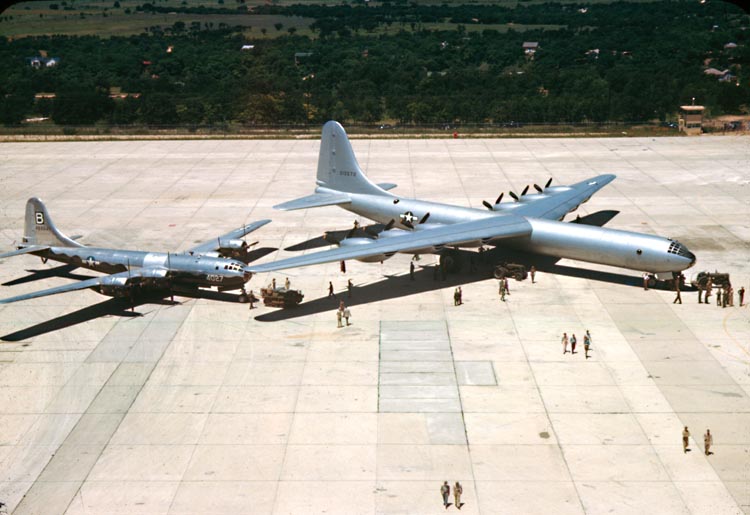
The XB-36 was 162 feet, ½ inch (49.390 meters) long with a wing span of 230 feet (70.104 meters), nearly 90 feet longer than that of the B-29 Superfortress that it would replace. Its height was 46 feet, 9-7/8 inches (14.272 meters) to the tip of the vertical fin. The wings’ leading edges were swept aft 15° 5′ 39″, and the trailing edges, 3°. They had 2° dihedral. The wings’ angle of incidence was 3° and they incorporated 2° of negative twist. The total wing area was 4,772 square feet (443.33 square meters). The prototype’s empty weight was 131,240 pounds (59,530 kilograms), and it had a maximum gross weight of 274,929 pounds (124,706 kilograms).
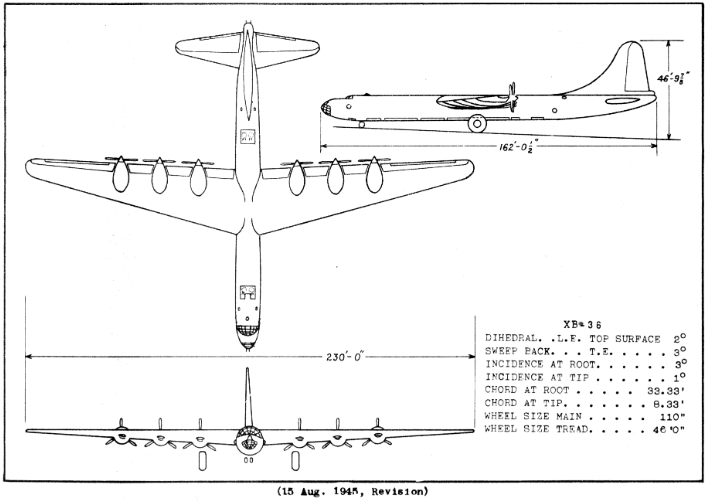
 The XB-36 was powered by six air-cooled, supercharged, 4,362.49 cubic-inch-displacement (71.489 liter) Pratt & Whitney Wasp Major TSB1P-G (R-4360-25) 28-cylinder four-row radial engines, with a normal power rating of 2,500 horsepower at 2,550 r.p.m. to 5,000 feet (1,524 meters), and 3,000 horsepower at 2,700 r.p.m. for takeoff. They were mounted inside the wings. The engines were arranged in a “pusher” configuration with intake and cooling air entering through inlets in the wing leading edge. They drove three-bladed Curtiss propellers with a diameter of 19 feet (5.8 meters) through a 0.381:1 gear reduction. The R-4360-25 was 9 feet, 1.75 inches (2.788 meters) long, 4 feet, 4.50 inches (1.334 meters) in diameter, and weighed 3,483 pounds (1,580 kilograms).
The XB-36 was powered by six air-cooled, supercharged, 4,362.49 cubic-inch-displacement (71.489 liter) Pratt & Whitney Wasp Major TSB1P-G (R-4360-25) 28-cylinder four-row radial engines, with a normal power rating of 2,500 horsepower at 2,550 r.p.m. to 5,000 feet (1,524 meters), and 3,000 horsepower at 2,700 r.p.m. for takeoff. They were mounted inside the wings. The engines were arranged in a “pusher” configuration with intake and cooling air entering through inlets in the wing leading edge. They drove three-bladed Curtiss propellers with a diameter of 19 feet (5.8 meters) through a 0.381:1 gear reduction. The R-4360-25 was 9 feet, 1.75 inches (2.788 meters) long, 4 feet, 4.50 inches (1.334 meters) in diameter, and weighed 3,483 pounds (1,580 kilograms).
The airplane’s estimated maximum speed was 347 miles per hour (558 kilometers per hour) at 35,000 feet (10,668 meters) and the cruising speed, 216 miles per hour (348 kilometers per hour). The service ceiling was predicted at 36,080 feet (10,997 meters) with all six engines running. It had an estimated range of 9,430 miles (15,176 kilometers) with a 10,000 pound (4,536 kilogram) bomb load.
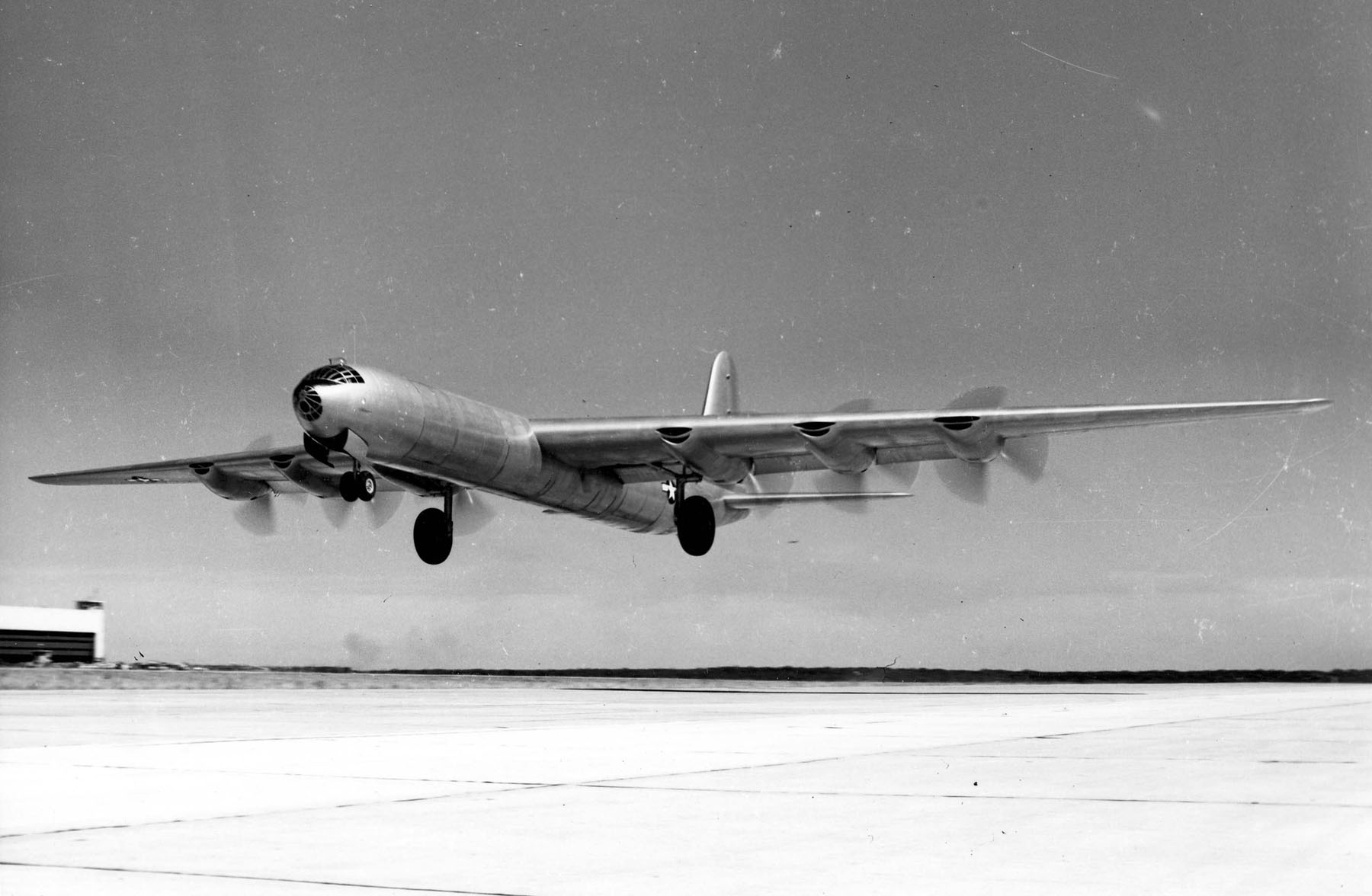
The bomber was designed to carry a maximum bomb load of 72,000 pounds (32,659 kilograms): as many as 132 500-pound bombs; 72 1,000 pound; 44 1,600 pound; 28 2,000-pound; or 12 4,000-pounders. Defensive armament was planned as two 37mm cannon in each of the forward upper and lower turrets, with 100 rounds of ammunition per gun; four .50-caliber machine guns in the rear upper and lower turrets with 1,000 rounds per gun; and one 37 mm cannon and two .50-caliber machine guns in the tail. The tail cannon would have 300 rounds, and the machine guns, 1,000 rounds per gun.
After testing, improvements were incorporated into the second prototype, YB-36 42-13571. In June 1948, the XB-36 was modified with R-4360-41 engines, and the main landing gear was changed from a single-wheel design to a 4-wheel bogie. With these and other changes the XB-36 was redesignated YB-36A. It was used for continued testing for the next several years, but was eventually stripped of its engines and equipment and used for firefighter training at the adjacent Carswell Air Force Base.
The YB-36 was selected for production as the B-36A Peacemaker. The B-36 series was produced in both bomber and reconnaissance versions and was in front line service from 1949 to 1959. Beginning with the B-36D, four turbojet engines were mounted beneath the wings in pods similar to those on the Boeing B-47 Stratojet, greatly increasing the bomber’s performance. A total of 384 were built. Only five still exist. The Peacemaker was never used in combat.
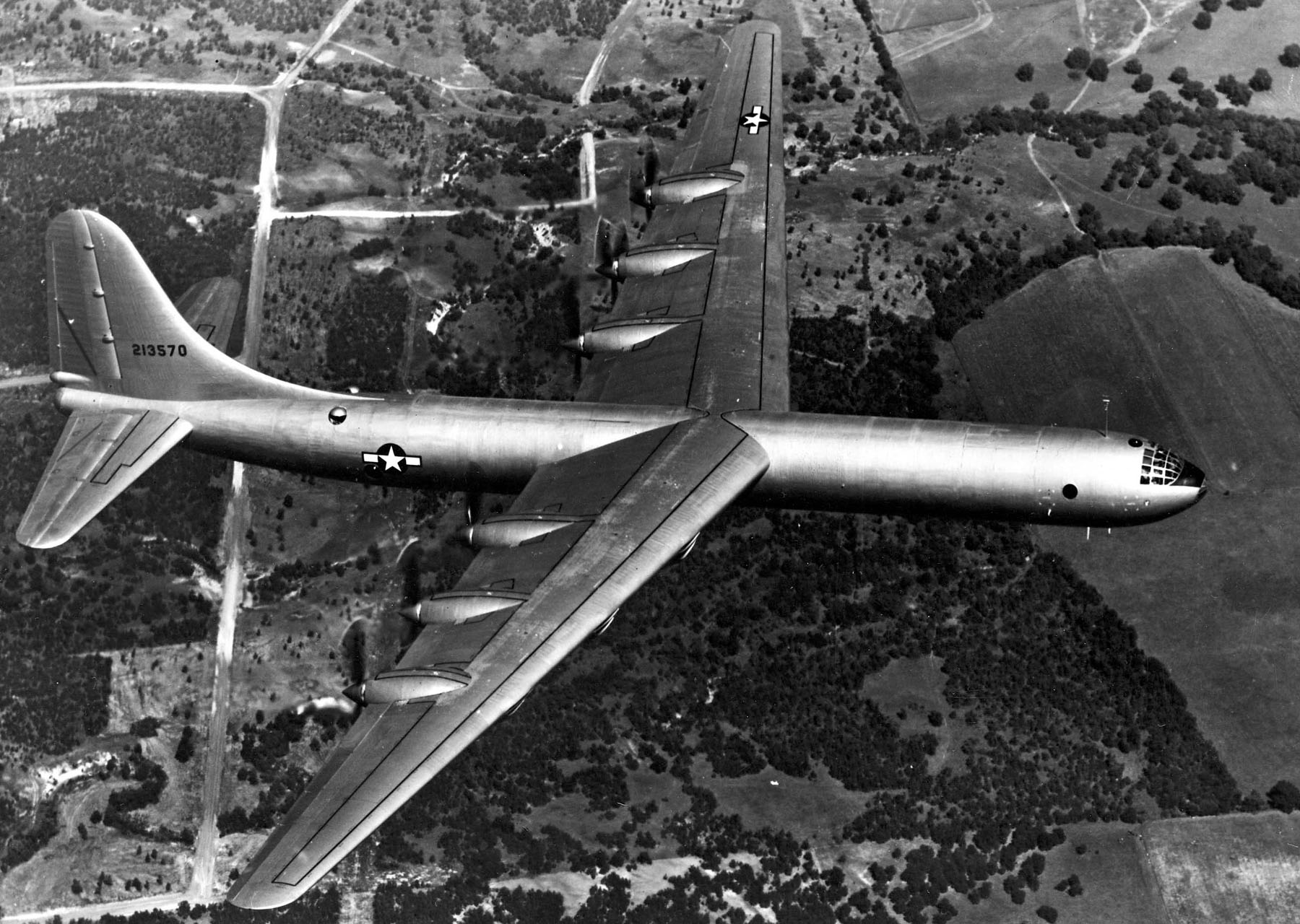
© 2023, Bryan R. Swopes
